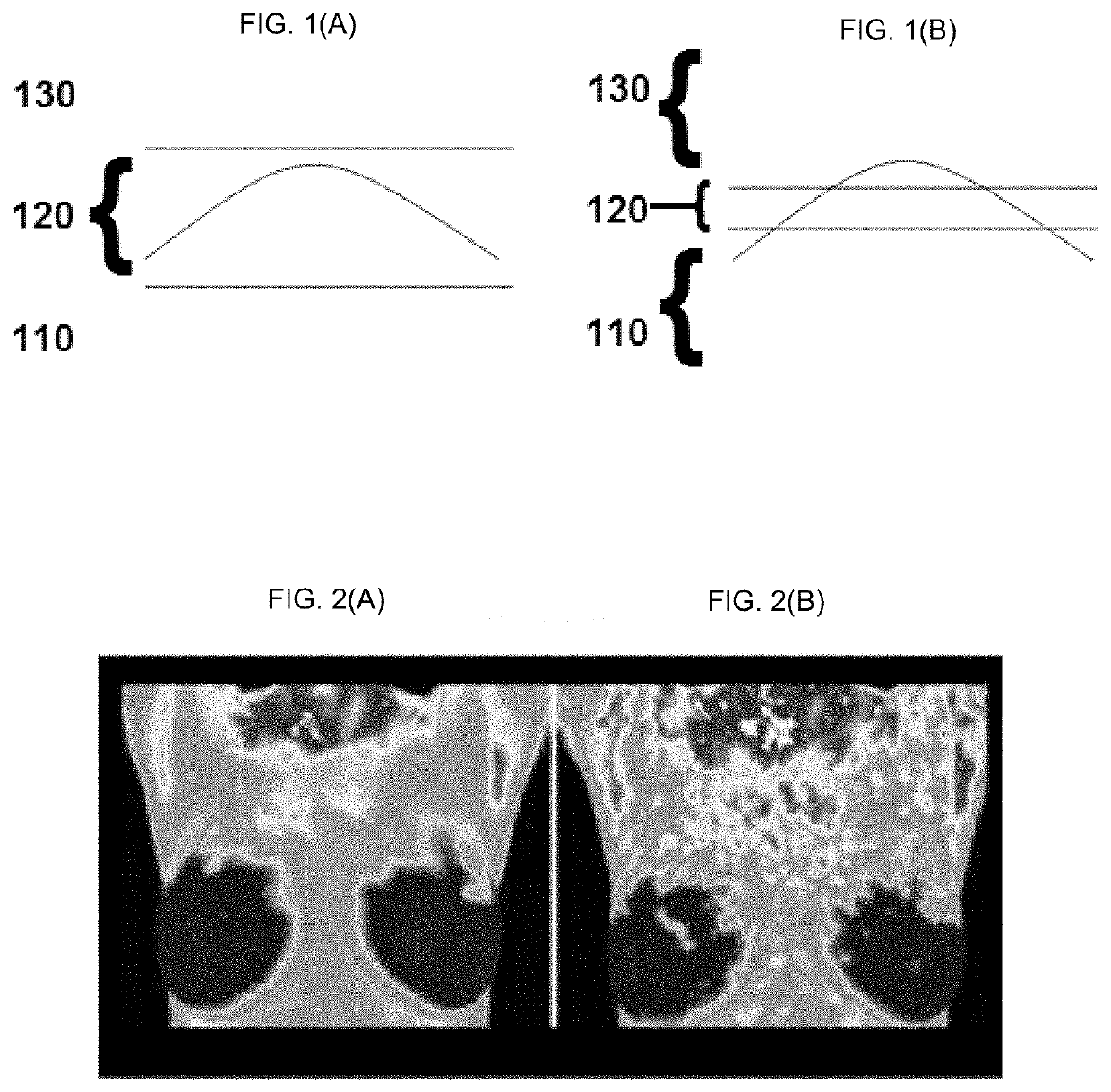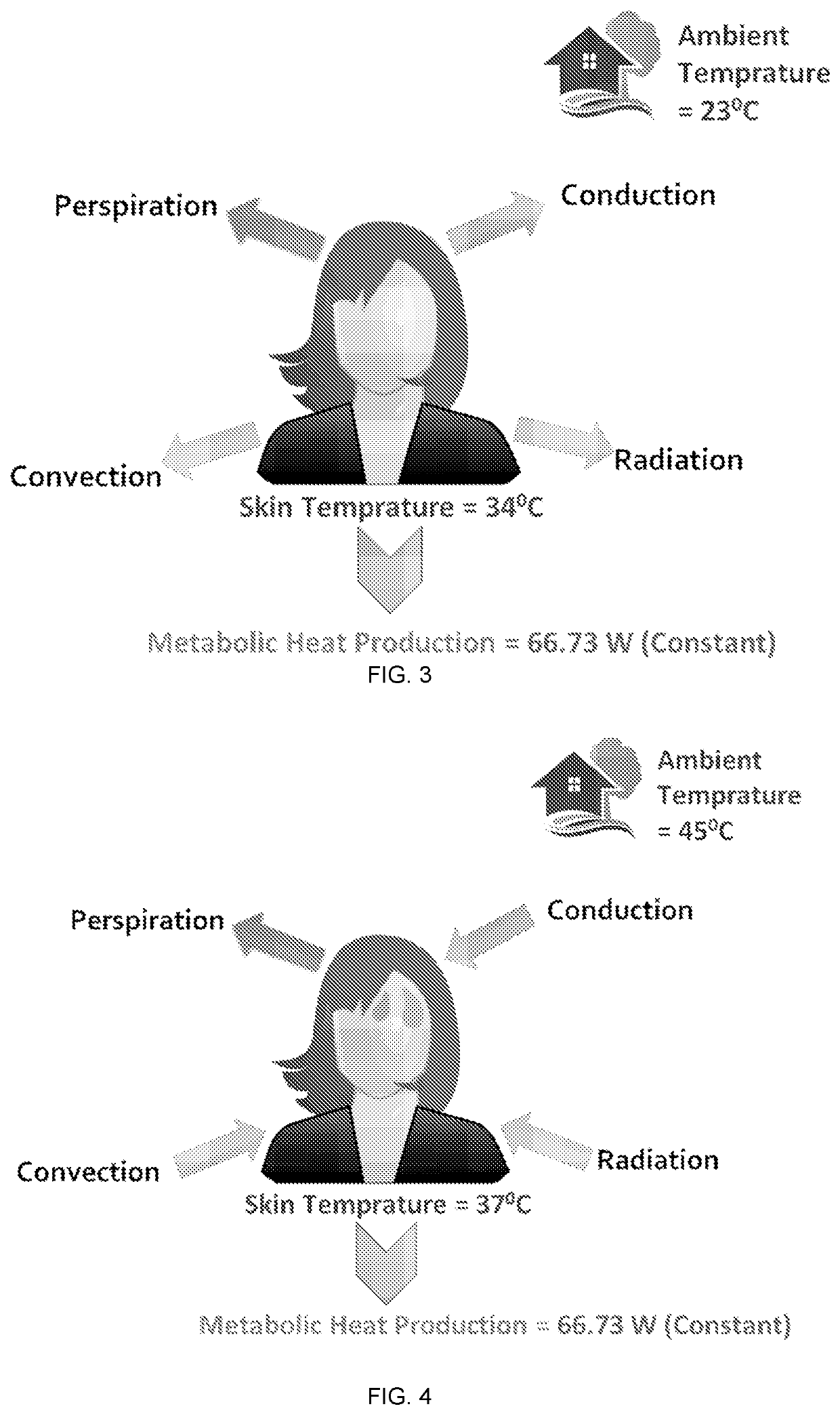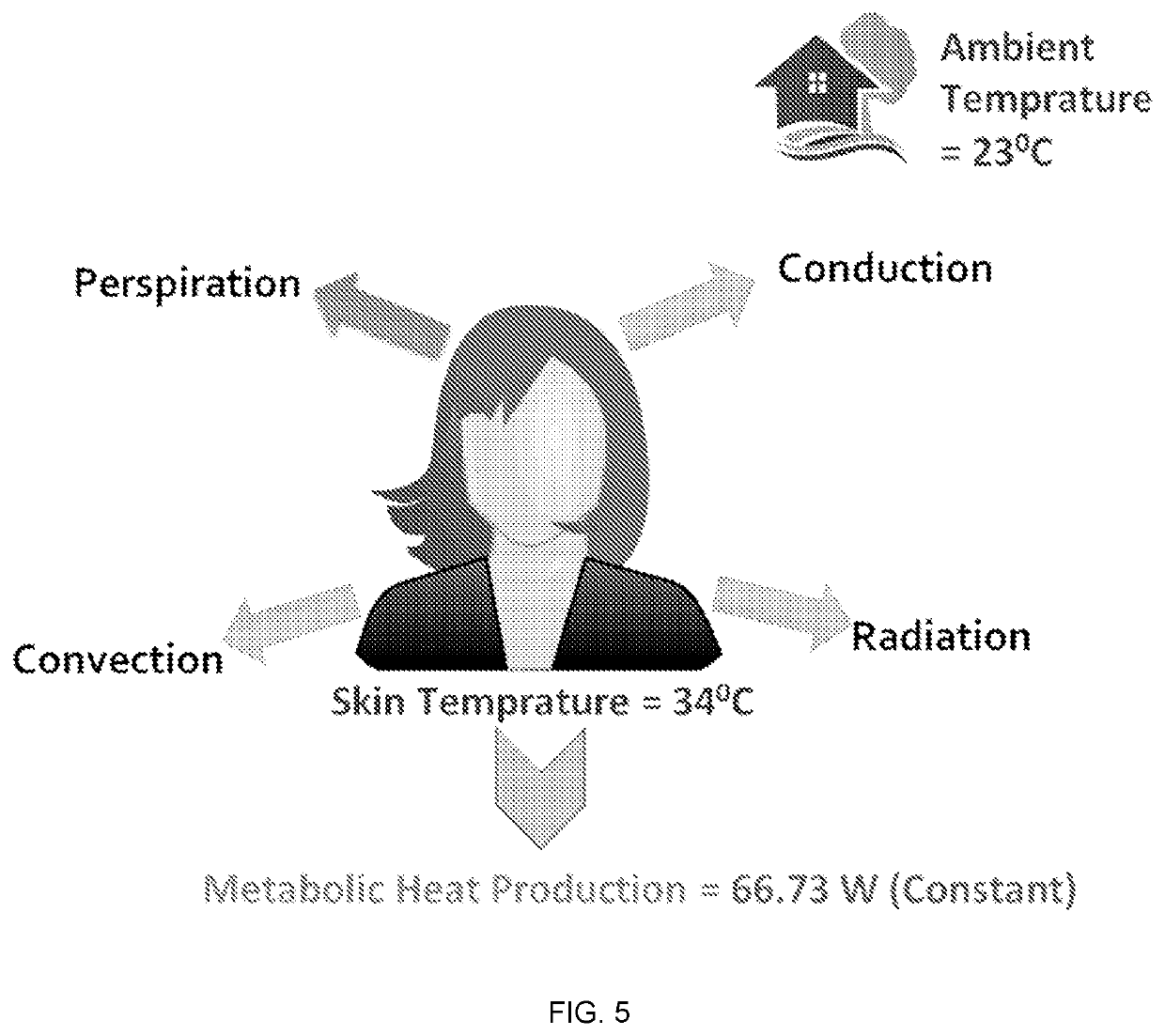Garment for reducing hot flushes or relieving associated symptoms
a technology for hot flushes and associated symptoms, applied in the field of garments for reducing hot flushes or relieving associated symptoms, can solve the problems of significant sweating, sufferer may experience chills and shivering, and the fluctuation in estrogen levels is not sufficient to explain the symptoms completely
- Summary
- Abstract
- Description
- Claims
- Application Information
AI Technical Summary
Benefits of technology
Problems solved by technology
Method used
Image
Examples
example 1
[0113]The measurement of cooling effects was performed on the Hohenstein Heat Release Tester “WATson”, which simulates the heat management of the human skin in a climatic chamber under defined climatic conditions. The measurements were conducted with the parameters found in Table 2. The WATson test apparatus is available from the Hohenstein Institut für Textilinnovation gGmbH, Schloss Hohenstein, 74357 Bönnigheim, Germany.
TABLE 2Temp. of WATson measuring headTs = 34° C.Area of WATson measuring headAw − 400 cm2 (20 × 20 cm)Ambient climate in the climate Ta = 27° C., RHa = 70%chamberEnvironmental condition 1Wind (1 m / s); IR-radiation @ 13.2 WSweat glands4 (inner glands)Sweat rate and sequence4-8 g / hdry / no pumpst = 0-10 minsweating, SWR 4 g / ht = 10-15 mindry / no pumpst = 15-35 minsweating, SWR 8 g / ht = 35-40 mindry / no pumpst = 40-60 minsweating, SWR 4 g / ht = 60-70 mindry / no pumpst = 70-90 minsweating, SWR 4 g / ht = 90-100 mindry / no pumpst = 100 min until “dry” state
[0114]The temperature ...
example 2
[0116]A tank top according to the above principles was developed. The tank top was constructed entirely of 100% NILIT Breeze Yarn (Nylon), which was then treated with Hydro PAG™ in accordance with the manufacturer's instructions and subsequently treated with Smart Temp™ in accordance with the manufacturer's instructions. The resulting tank top was used in the experiments below.
example 3
[0117]A test tank-top made in accordance with Example 2 was fitted with a THG BodyView microclimate measurement system with 14 sensors mounted across the inner back of the test top is placed on a subject (see FIG. 8). The subject wearing the test top enters a controlled climate chamber with defined environmental conditions in a “cold state” (i.e. without having conducted exercise beforehand) and, after 5 minutes of acclimatisation, the subject will begin to exercise on a bike ergometer at 120 W (strong) to gain heat within the body core. A fifteenth sensor will track the skin temperature at the middle of the subject's back. The THG BodyView tracks temperature, relative humidity and absolute humidity every fifteen seconds. In parallel, the core heat of the subject will be tracked manually by a Withings Thermo from the start of the measurement in sixty second intervals. Once the skin heat indicated a rise of 0.5° C., the exercise will be stopped and the subject allowed to thermoregula...
PUM
 Login to View More
Login to View More Abstract
Description
Claims
Application Information
 Login to View More
Login to View More - R&D
- Intellectual Property
- Life Sciences
- Materials
- Tech Scout
- Unparalleled Data Quality
- Higher Quality Content
- 60% Fewer Hallucinations
Browse by: Latest US Patents, China's latest patents, Technical Efficacy Thesaurus, Application Domain, Technology Topic, Popular Technical Reports.
© 2025 PatSnap. All rights reserved.Legal|Privacy policy|Modern Slavery Act Transparency Statement|Sitemap|About US| Contact US: help@patsnap.com



